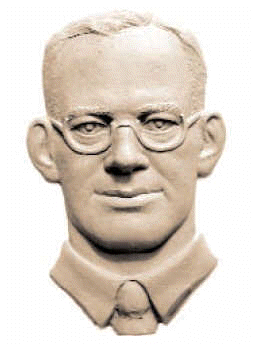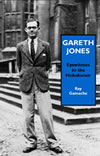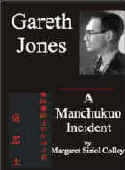Gareth Jones
[bas relief by Oleh Lesiuk]
HOME |
Stop Press |
Complete Soviet Articles & Background Information |
Précis of Gareth's
|
All Published Articles |
BOOKS
|
|
|
|
More Than Grain of Truth(2005) |
|
|
TOPICAL
'Are you Listening NYT?' U.N. Speech - Nov 2009 |
Gareth Recognised at Cambridge - Nov 2009 |
Reporter and the Genocide - Rome, March 2009 |
Order of Freedom Award -Nov 2008 |
Premiere of 'The Living' Documentary Kyiv - Nov 2008 |
Gareth Jones 'Famine' Diaries - Chicago 2008 |
Aberystwyth Memorial Plaque 2006 |
GENERAL
Scholarship Fund |
Site Map |
Links |
Legal Notices |
Sponsored Links |
Contact |
The Western Mail 26th February 1934Welsh Hounds “Finest in the World”Descendants of Famous PackBy GARETH JONES
“Watch
‘em as they scamper over the mountains,” he went on. “Rocks is
nothing to them. Why, they’d be over Mount Everest before you could
say Jack Robinson. O! dear, O! dear, I could cry when I think of the
old Welsh packs which have gone.” That
was my first introduction to Welsh foxhounds as I listened by the fireside
to the sentimental old fellow whose affection for his former hounds was only
exceeded by his Celtic zest and propensity for exaggeration. I
had also learned that the Welsh foxhound was a sturdy independent hunter,
trained to be self-reliant in the rugged and rocky hills, with a good tongue
and a rough coat. But that was almost all I knew about the hounds of
my native country. Therefore,
I decided to visit a Welsh pack. On a bright February day I crossed
the Brecon Beacons by car, reflecting as I looked up to the sharp abruptness
of the mountain tops on the difficulties of hunting in that country. I
drove past Sennybridge, in the Usk Valley, and after mounting and descending
like a switchback a charming one-span bridge near a waterfall arrived at
Pantysgallog, where Mr. W. H. P. Rees keeps his renowned pack of Welsh
fox-hounds. AT THE KENNELSBefore
long Mr. Rees and I were walking up from the house beneath an avenue of
trees to the kennels, outside which there was a Golgotha of bones, the
remains of many meals, aver which chaffinches were now darting. Lively
little terriers, with the pluck of Welsh bantams, wagged their tails with
furious excitement as we headed for the kennel door. When
the door had closed behind us we found ourselves in a courtyard laced by a
group of rough-coated, high-domed, light-coloured hounds, with long ears and
intelligent, doleful eyes, who rushed to offer us the hospitality and
greetings of the kennels. These were the famous Welsh foxhounds, and
better hounds for the mountains which towered around us and for the crags of
the summits you could not find. Natural
hunters, they are built in the right way to go up and down in precipitous
country. They have good shoulders, good noses, and a good cry which
you can hear miles away. It is said that one day last week they could
be heard six miles away! Their lovely music is essential in a hilly
district where the field follows quite as much by ear as by sight, and where
a small ridge hides every glimpse of the hounds. Let
me introduce you to the pack, and you will, in meeting them, have a link
with the famous hunts of Glamorgan in the last century, before the valleys
wee filled with collieries and when the note of the horn was a more familiar
sound than the engine whistle. THEIR ANCESTRYAll
the Pantysgallog Hounds are descended from these Glamorgan packs and a
glance at them still enables you to trace their ancestry. Look at
those lemon and white hounds which sit upright upon the large bench,
curiously studying the incomers. They are surely from the Glog Hounds,
for the Squire of the Glog, Mr. Williams, was fond of lemon and white, and
bred many of them. Many of the Glog Hounds had a red or a white star
on the forehead. Look
at “Dido” with her white collar. She is a relic of the Bedlinog
pack, where the master favoured red hounds with a white collar. The
Bedlinog Hounds also had a white spot on the stern. It was, therefore,
with the pride of newly-acquired knowledge that I was able to point out some
hounds and say to them, “Aba, I can see by that white spot on your stern
that your grandmamma or grandpapa once roamed the hills near Bedlinog and
probably saved the life of many a Bedlinog chicken.” “What
about those black and tan hounds?” I asked Mr. Rees. “Those
are descended from the Gelli, where they bred black and tans or greys,” he
replied, and he explained how, as time went on and the packs were disbanded,
they found their way to the Glog, whence they came to Pantysgallog. THE BLUE-GREY HOUND“Countess,”
champion bitch at the Cardiff Royal Welsh Show, was the hound which
impressed me most mainly by her curious blue-grey colour. I had never
seen a• hound of that hue before. These old blue greys, so well
represented by “Countess,” are, so Mr. Rees explained, probably a cross
of the Glog whites and the black hounds of the Gelli. Some
of the hounds are descended from the Glyncorrwg and some from the Bwllfa
breed. Therefore, in Pantysgallog today you have the pick of the many
famed hunts of the Glamorgan of yesterday, and the preponderating colour is
white, just as it was in the old packs. “Gomer” and “Luter,”
two champion hounds at Royal Welsh Shows, and their fellow-hounds carry on
the good traditions of their Glamorgan forefathers. They are cared for
by Haydn Price, huntsman, and by scarlet-jerseyed Constantine Lloyd, groom. After
the kennel door had slammed behind me and I stopped near the bridge to look
down at the deep pools and the splashing waters of the Usk, I thought of the
old huntsman who had first roused my interest in Welsh hounds, and I
reflected on the joy he would experience to see the packs he loved so much
living on in the hounds of Mr. Rees, Pantysgallog. |
GARETH JONES (1905 -35) |




